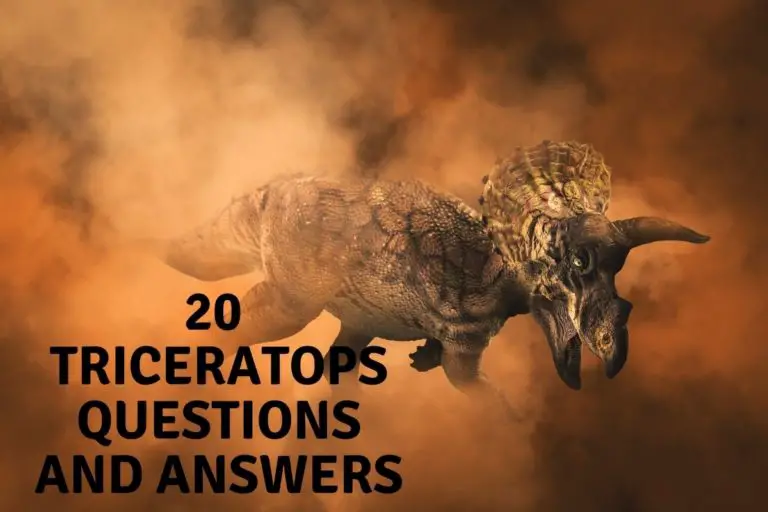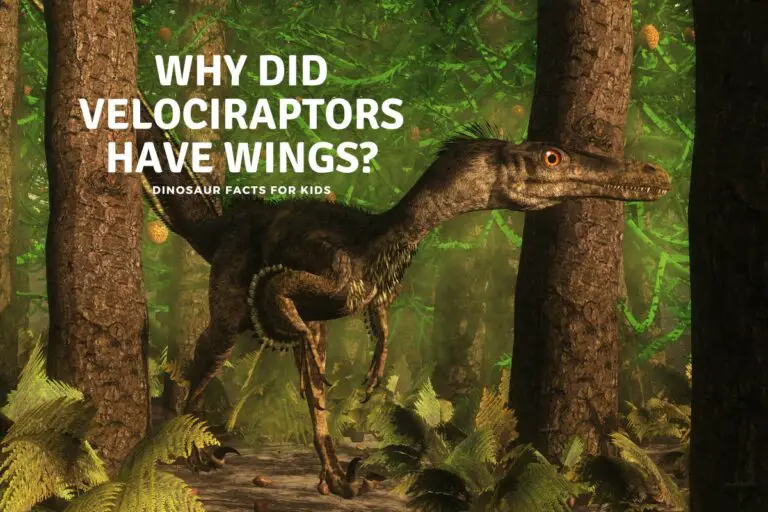Did All Dinosaurs Lay Eggs?
According to recent discoveries, it is safe to say that some dinosaurs hatched from eggs. Paleontologists have unearthed fossilized eggs, some with dinosaur embryos still intact. The most notable discovery was in 2021 in Argentina, where scientists discovered more than 100 dinosaur eggs. It is this noteworthy discovery that solidifies the belief that most if not all dinosaurs laid eggs. But did all dinosaurs lay eggs?
At this time, there is not enough evidence showing that all genera of dinosaurs laid eggs. According to scientists, the egg-laying species of dinosaurs are the hadrosaurs, sauropods, and theropods. These eggs came in different constructions and sizes
We know that dinosaurs existed because there have been numerous discoveries of bones and skeletons belonging to different reptile species. But where did dinosaurs come from? Did they reproduce like other members of the reptile or bird families by laying eggs?
Let’s dive into this topic more and why scientists believe most dinosaurs hatched from eggs.
Notable Discoveries of Dinosaur Eggs
The first documented discovery of dinosaur eggs was in 1859 in southern France. A scientist named Jean-Jacques Pouch unearthed and found large fossil dinosaur eggshells, which he mistook to belong to a giant bird.
Over the centuries, there have been other discoveries in the United States, Asia, Mongolia, Canada, North America, and recently in Argentina.
The dinosaur eggs in the Patagonian region in Argentina were found in a dinosaur graveyard, meaning there have been several other discoveries of dinosaur fossils. Scientists believe that the eggs have been on earth for 193 million years.
All Modern Descendants of Dinosaurs Also Lay Eggs
Animals like crocodiles, birds, and other reptiles are believed to be modern descendants of dinosaurs.
Birds are believed to have descended from feathered dinosaurs who survived the mass extinction 65 million years ago. Additionally, considerable evidence shows that crocodiles are the closest modern-day descendant of dinosaurs.
Both birds and crocodiles share some common characteristics with dinosaurs. though Birds seem to share more. For example, see the table below.
| Feature | Dinosaurs | Birds | Lizards /Crocodiles |
| Skin | Some scaled / Some feathered | Feathered | Scales |
| Legs | Most more vertical / down | Vertical | Form the side ( horizontal) |
| Blood | A form of warm-blooded | Warm-blooded | Cold blooded |
| reproduction | Majority egg laying | Egg laying | Egg laying |
It is, therefore, not too much of a stretch to say that these modern-day descendants also share the same reproductive system, which is laying eggs.
What else can their eggs teach us about dinosaurs?
What Can We Learn About Dinosaurs from Their Eggs?
The most obvious thing we learn is that dinosaurs laid many eggs, just like their descendants today.
According to scientists, female dinosaurs laid up to 20 eggs at a time because many dinosaur hatchlings did not survive. There were many risks:
- Predators would eat dinosaur eggs given half a chance.
- Young dinosaurs would destroy others as they hatched from their eggs
- Those big feet stomping around were always a risk. ( it’s hard to see the ground when your head is 8 metres up in the air.)
- Environmental issues like too hot or too cold ( we are unaware how many dinosaur species protected their nests)
Another thing we learn from eggs is that dinosaurs were nesters.
In Mongolia, scientists discovered nesting sites where dinosaur eggs seemed to be in colonies. Further research led to another discovery that some species of dinosaurs stayed with their eggs to protect them until they hatched.
Fun Fact: Dinosaurs could not sit on their eggs like birds because they were too heavy!
Some dinosaurs built nests where they would arrange their eggs and protect their young ones by covering them with their wings, and bodies. This is evidenced by spiral rings with openings at the center of dinosaur fossils. Of course that’s just the dinosaurs who had wings of course.
Dinosaurs that didn’t have wings, especially those that were big, would not have been able to “heat” the eggs by sitting on them. if they did protect it may have just been to make sure no predators could get hold of them.
Now that you know dinosaurs laid eggs, you must be curious about how they look. Keep reading to learn more about the types and characteristics of dinosaur eggs.

3 Types (and Characteristics) of Dinosaur Eggs
Dinosaur eggs are classified into three main categories. These include:
- Spherulitic Eggs – Spherulitic eggs have a crystalline structure with spherical patterns found in the sauropods and hadrosaurs species.
- Prismatic Eggs – These eggs have spherical crystals at the bottom and prism-shaped crystals at the top. Its a long word to describe how the eggs are made.
- Ornithoid Eggs – Ornithoid eggs are commonly found among the therapod dinosaurs, and they share a similar structure to eggs laid by some birds. The top and middle parts of the shell have a mass of crystalline substance with a spongy ultrastructure containing a homogeneous layer. The bottom part of the egg exists as a separate unit.In simpler
In simpler terms, for us as well as you!, it means different dinosaurs laid different types of eggs. Which is handy for scientists as 65 million years later it is not very easy to know what dinosaur laid what eggs when we find them!
Were Dinosaur Eggs Soft or Hard?
It is common to think that dinosaurs laid eggs with hard shells.
But not so fast…
A recent study has forced scientists to rethink this fact. Scientists could not explain the lack of fossil eggs from early dinosaurs for a long time. A study led by the American Museum of National History and Yale University discovered that early dinosaurs laid eggs similar to those of the modern-day turtle.
The study was done on the embryos of two different species of dinosaurs: the Protoceratops and the Mussaurus.
The two species existed millions of years apart. Still, thanks to modern technology and preserved embryos of both species, scientists uncovered that the eggshells of these dinosaurs were leathery and soft like turtle eggs.
It then makes sense why the Mussaurus eggs found in Argentina were buried. Most animals that lay eggs with a soft shell bury their eggs in moist soil to protect their young ones.
Does this mean that there are no dinosaurs that laid hard-shelled eggs?
Scientists agree that the eggs evolved with time, and that’s why some dinosaur fossils of some species that came later show that dinosaurs laid eggs with hard shells. In Fact it is possible to own a little piece of dinosaur egg shell with the pattern and texture still on it for only a few dollars.
What Color Were Dinosaur Eggs?
Dinosaur eggs come in various hues and patterns similar to what we see in birds today.
The Velociraptor laid blue-green eggs.
Other species like the troodontids had a wider variety of blue-green, white, and beige-colored eggs.
On top of this background color were some dark speckling patterns scientists believe were there to help hide the eggs from the hungry eyes of other dinosaurs. Some dinosaur eggs had tinted shells with distinctive designs to protect their babies from predators and help parents identify their eggs.
However, not all dinosaurs laid colorful eggs.
Most herbivorous species (like the sauropods and the maiasaura) laid white eggs, which they buried in the ground for protection.
What is the Shape and Size of Dinosaur Eggs?
Dinosaur eggs come in two primary shapes: spherical and elongated.
Depending on the species, the size of the egg can differ in size. For example, the hadrosaur eggs are believed to have grown pretty big, and apatosaurus eggs could be 1 ft long.
The Massaurus are known to have laid the most miniature eggs, which is interesting because they are some of the most enormous dinosaurs.
Conclusion
Hopefully you have learnt something new about dinosaur Eggs, i know we certainly did researching this article for you. they could be large or small, and we know that the dinosaurs than hatched out of them had to grow pretty big, pretty quickly to have a chance at surviving.
We continue to find fossilized dinosaur eggs and with each discovery it helps us learn more and more about the lives of baby dinosaurs all those millions of years ago.
References
https://en.wikipedia.org/wiki/Dinosaur_egg#Structure
https://www.sciencenewsforstudents.org/article/early-dinosaurs-soft-shelled-eggs-fossil
Hi, I am Roy Ford a General Studies and English Teacher who has taught all over the world. What started as a fossil collection became a great way to teach, motivate and inspire students of all ages and all over the world about dinosaurs and from that and children’s love of dinosaurs came the site dinosaur facts for kids, a resource for all ages.






